Construction and design industries face a growing challenge: balancing aesthetic appeal with environmental responsibility. As sustainability regulations tighten and client demand for eco-friendly materials increases, architects and designers must find materials that don’t compromise on visual impact or durability.
Random loose stone offers a compelling solution to this dilemma. Unlike manufactured alternatives with significant carbon footprints, natural stone cladding provides organic textures, dimensional character, and environmental benefits that align with modern green building standards. The irregular patterns and textures of random loose stone create distinctive visual interest while contributing to LEED certification points and sustainable design practices—making it increasingly popular for both commercial buildings and outdoor spaces.
The versatility of random loose stone extends beyond its environmental credentials. From contemporary urban developments to rustic outdoor landscapes, this natural material adapts to diverse architectural contexts while delivering exceptional longevity that synthetic alternatives simply can’t match. With proper installation, these stone wall veneers maintain their integrity and beauty for decades, representing both an aesthetic investment and a practical one.
The Enduring Appeal of Random Loose Stone: Aesthetics and Sustainability
Random loose stone stands as a timeless design element in architectural and landscaping projects, offering a perfect balance between natural beauty and practical functionality. This versatile material has been gaining renewed attention from designers and builders seeking authentic, sustainable options that make a “wow factor” statement in both residential and commercial applications.
Random loose stone provides both aesthetic versatility and environmental benefits, making it an increasingly popular choice for sustainable design projects in modern architecture.
Defining Random Loose Stone: What Makes It Unique?
Unlike uniform manufactured stone products, random loose stone embraces natural variation in size, shape, color, and texture. Each piece tells its own geological story, having been shaped by natural processes over thousands of years. This irregularity creates rich, organic textures that cannot be authentically replicated by manufactured alternatives.
The installation process typically involves selecting and placing individual stones to create a cohesive yet naturally varied surface. This method allows for creative expression while maintaining the material’s authentic character. The result is a distinctive appearance that connects built environments with the natural world.
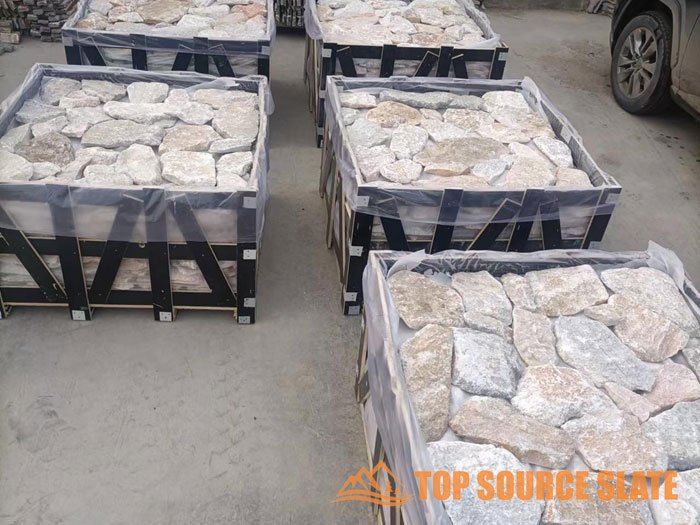

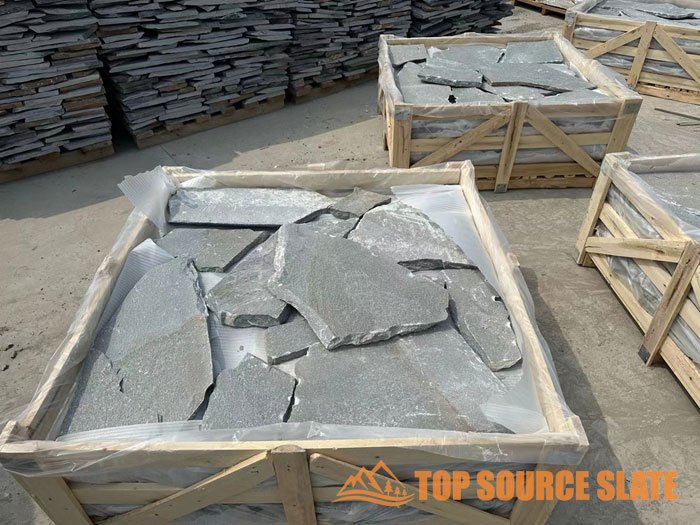
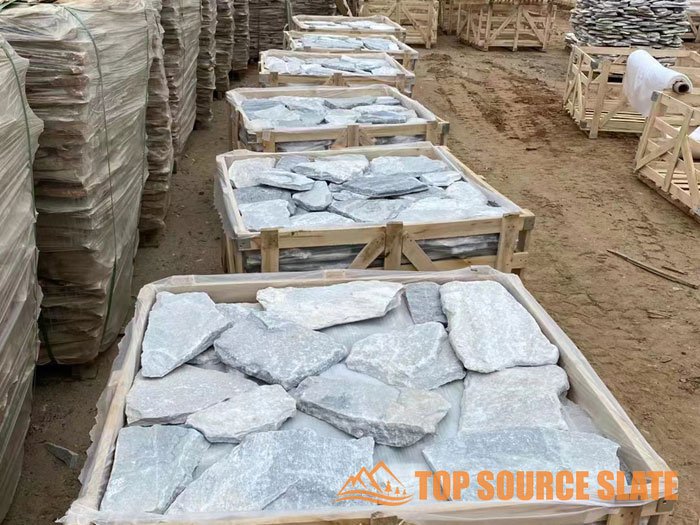

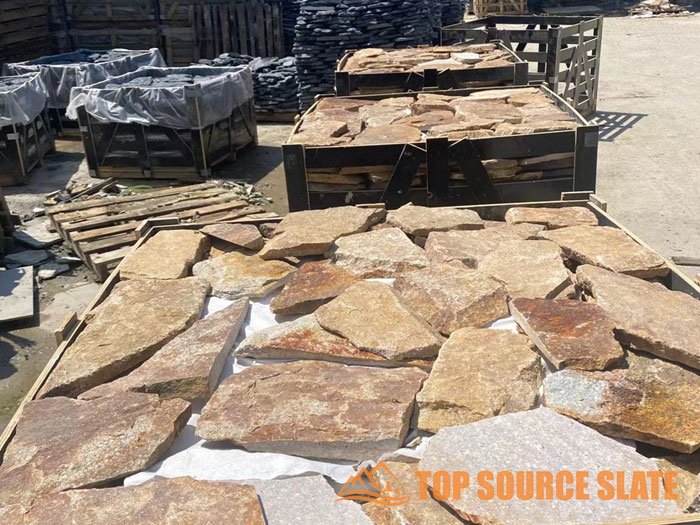
Aesthetic Versatility: Adapting to Various Design Styles
One of random loose stone’s greatest strengths is its remarkable adaptability across design contexts. From rustic countryside retreats to sleek contemporary spaces, this material enhances nearly any architectural style. The organic stone wall textures create visual interest through natural shadow lines and dimension.
Designers appreciate how random loose stone can either serve as a dramatic focal point or complement other materials. Its neutral earth tones provide a grounding element that pairs beautifully with wood, metal, glass, and concrete. This versatility makes it equally suitable for interior feature walls, exterior cladding, landscape elements, and more.
Environmental Benefits: Reduced Carbon Footprint and Sustainable Sourcing
| Sustainability Metric | Random Loose Stone | Manufactured Stone | Brick | Industry Average | Environmental Impact |
|---|---|---|---|---|---|
| Embodied Energy (MJ/kg) | 0.79 | 5.86 | 2.95 | 3.20 | Lower values indicate less energy consumed in production |
| Carbon Footprint (kg CO₂/kg) | 0.06 | 0.42 | 0.24 | 0.24 | Measures greenhouse gas emissions during production |
| Water Usage (L/kg) | 0.10 | 1.89 | 0.97 | 0.99 | Water consumed during extraction and processing |
| Lifespan (years) | 100+ | 50+ | 75+ | 75+ | Durability affects replacement frequency and waste |
| Recyclability Index (0-10) | 8.7 | 4.3 | 6.8 | 6.6 | Higher scores indicate greater potential for reuse |
The environmental benefits of random loose stone are substantial. As a natural material requiring minimal processing, it has significantly lower embodied energy compared to manufactured alternatives. Sustainable natural stone cladding can reduce a project’s carbon footprint while providing superior longevity.
When sourced responsibly from local quarries, transportation impacts are minimized, further enhancing its environmental credentials. Additionally, stone’s thermal mass properties can contribute to energy efficiency, helping regulate indoor temperatures naturally and reducing heating and cooling demands.
The Growing Demand: Why Professionals Are Choosing Random Loose Stone
Architects and designers increasingly specify random loose stone for its combination of aesthetic appeal, durability, and sustainability. The benefits of using random loose stone in design projects extend beyond visual impact to include practical considerations like weather resistance, minimal maintenance requirements, and exceptional longevity.
Top Source Slate offers direct manufacturer pricing on premium stone products, making this luxurious material more accessible for budget-conscious clients. Their comprehensive customization services ensure that each project receives precisely the right stone specification without compromising on quality or appearance.

Types, Applications, and Installation of Random Loose Stone
Random loose stone cladding represents one of the most versatile and enduring materials in architectural design. With its natural variations and organic textures, this traditional building material continues to find new expressions in contemporary projects. Designers and builders appreciate both its timeless appeal and remarkable adaptability across diverse applications.
Random loose stone offers exceptional design flexibility with minimal environmental impact, making it ideal for projects requiring authenticity and durability in both interior and exterior applications.
Exploring Stone Types: Sandstone, Limestone, Slate, and More
Each variety of natural stone brings distinct characteristics to random loose stone applications. Sandstone offers warm earth tones and excellent workability, making it popular for both interior and exterior applications. Limestone provides a more uniform appearance with subtle variations in texture, ideal for creating elegant, cohesive surfaces.
Slate delivers dramatic color variations from deep charcoals to vibrant blues and purples, with exceptional durability against harsh weather conditions. Granite and quartzite offer superior hardness for high-traffic areas, while marble adds luxurious veining for premium interior applications. The best natural stones for wall cladding depend on the specific project requirements, climate conditions, and desired aesthetic.
Versatile Applications: Interior Walls, Exterior Cladding, and Landscaping
Inside homes and commercial spaces, random loose stone creates striking feature walls, fireplace surrounds, and accent areas. The natural variations in stone wall veneer create depth and visual interest impossible to achieve with manufactured materials. In bathrooms and kitchens, non-porous varieties provide practical splash protection with organic beauty.
For exterior applications, random loose stone cladding enhances building facades with weather resistance and timeless appeal. The material excels in landscaping applications including garden walls, water features, and pathway borders. Irregular stone patterns create unique visual rhythms that connect built environments with the surrounding landscape.
Comparative Properties of Common Random Loose Stone Materials
| Stone Type | Hardness (Mohs) | Porosity (%) | Weight (lbs/ft²) | Freeze-Thaw Durability | Ideal Applications |
|---|---|---|---|---|---|
| Sandstone | 6-7 | 5-25 | 12-15 | Moderate | Interior walls, sheltered exteriors, warmer climates |
| Limestone | 3-4 | 0.5-30 | 14-18 | Low to Moderate | Interior features, protected exterior applications |
| Slate | 5-6 | 0.1-5 | 13-17 | Excellent | All-weather exteriors, water features, roofing |
| Granite | 6-7 | 0.2-4 | 17-20 | Excellent | High-traffic areas, outdoor kitchens, severe weather |
| Quartzite | 7 | 0.1-3 | 15-18 | Excellent | Extreme climate zones, structural elements, modern designs |
Installation Tips and Best Practices for Durability
Successful installation begins with proper substrate preparation. For exterior applications, a weather-resistant barrier is essential before applying mortar. When learning how to install random loose stone cladding, professionals recommend creating a layout plan first, selecting stones with complementary sizes and shapes to establish natural-looking patterns.
Strategic stone placement is key to achieving balanced irregular stone patterns. Work from bottom to top, starting with larger pieces at the base, and maintain consistent joint widths. Top Source Slate’s two-stage quality control process ensures dimensional precision and material integrity, reducing installation complications and ensuring long-term performance.
Case Studies: Successful Projects Using Random Loose Stone
The Mountain View Resort renovation demonstrates how random loose stone transforms outdated structures into timeless attractions. By applying locally-sourced granite in varying sizes, the designers created facades that “pop off the page” while harmonizing with the natural surroundings. The project showcased customization options available through specialized suppliers like Top Source Slate.
In urban applications, the Riverside Office Complex utilized random loose stone elements to soften an otherwise modern glass and steel structure. The contrast between natural stone and manufactured materials created visual interest while improving the building’s connection to its riverfront setting. The stone’s thermal mass properties contributed to improved energy efficiency throughout the complex
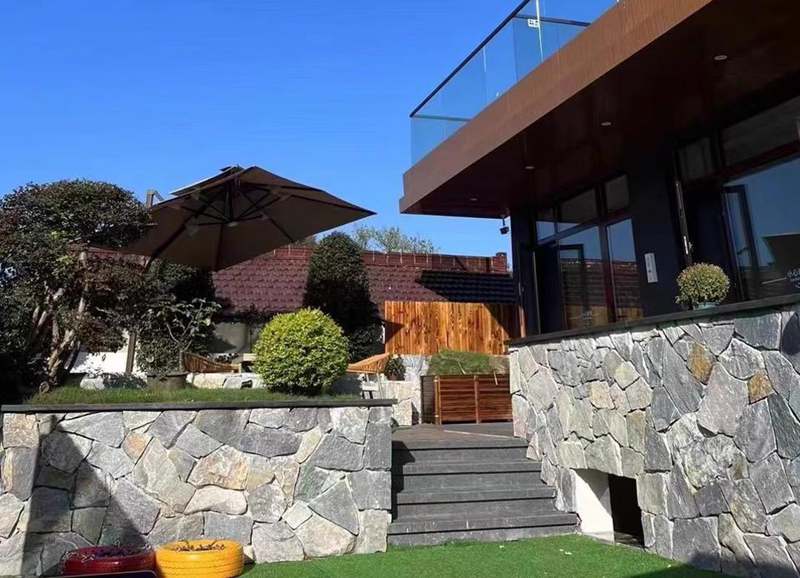
Maximizing Value with Random Loose Stone: Cost, Longevity, and Procurement
When evaluating building materials, random stone design offers a compelling combination of aesthetics, durability, and long-term value. While the initial investment may exceed some alternatives, understanding the complete lifecycle costs reveals why natural aesthetic stone solutions remain popular among forward-thinking architects, builders, and property owners.
Random loose stone provides exceptional long-term value through its durability, minimal maintenance requirements, and timeless appeal that appreciates rather than depreciates over decades of use.
Cost Analysis: Comparing Random Loose Stone to Alternatives
The upfront cost of random loose stone typically ranges from $8-25 per square foot, depending on stone type, quality, and sourcing methods. While this may exceed manufactured stone veneer ($5-15) or brick ($7-15), the lifecycle cost analysis reveals a different story. The exceptional durability means replacement costs are essentially eliminated, unlike manufactured alternatives that typically require replacement every 20-30 years.
Installation costs for durable stone wall veneer can be higher due to skilled labor requirements and longer installation time. However, cost-effective random loose stone solutions emerge through direct sourcing relationships with manufacturers like Top Source Slate, who eliminate middleman markups while maintaining premium quality standards.
Longevity and Durability: Ensuring a Lasting Investment
Natural stone’s exceptional lifespan sets it apart from nearly all building materials. While many building elements require replacement within decades, properly installed stone continues performing for centuries with minimal degradation. This exceptional longevity transforms what might appear as a premium initial investment into the most economical long-term solution.
To maximize design lifespan with stone wall veneer, proper installation is critical. Quality backing materials, appropriate drainage systems, and professional application techniques prevent potential issues like water infiltration or freeze-thaw damage. Random stone design allows for natural settling without compromising structural integrity, further enhancing its durability advantage.
Comparative Lifecycle Cost Analysis of Wall Cladding Materials
| Cost Factor | Random Loose Stone | Manufactured Stone | Brick | Fiber Cement | Vinyl Siding |
|---|---|---|---|---|---|
| Initial Cost ($/sq.ft) | 15-25 | 10-18 | 8-15 | 6-12 | 4-8 |
| Installation Cost ($/sq.ft) | 15-30 | 10-20 | 10-18 | 6-10 | 3-7 |
| Annual Maintenance ($/sq.ft) | 0.10-0.25 | 0.30-0.75 | 0.20-0.40 | 0.40-0.80 | 0.50-1.00 |
| Expected Lifespan (years) | 75+ | 25-30 | 40-50 | 30-50 | 20-30 |
| 50-Year Total Cost ($/sq.ft) | 35-60 | 45-85 | 40-70 | 50-90 | 65-110 |
Procurement Strategies: Direct Sourcing for Competitive Pricing
Working directly with manufacturers offers substantial cost advantages. With over 15 years of experience in international stone trade, I’ve helped countless clients eliminate unnecessary markups while ensuring quality standards. Direct procurement bypasses multiple distribution layers that can increase costs by 30-50% without adding value.
For larger projects, consider consolidating purchases to leverage volume pricing. Most stone manufacturers offer significant discounts for minimum order quantities. Request samples before committing to large orders to verify quality and appearance in your specific setting and lighting conditions.
Maintenance and Care: Tips for Preserving Beauty and Integrity
One of random loose stone’s greatest advantages is its minimal maintenance requirements. For exterior applications, an annual inspection and gentle cleaning with mild soap and water are typically sufficient. Interior installations may require only occasional dusting. Unlike manufactured alternatives, natural stone patinas gracefully, often looking better with age.
For maximum protection, consider applying a quality penetrating sealer every 5-10 years depending on exposure conditions. This simple maintenance step helps prevent staining and moisture intrusion while preserving the stone’s natural appearance. With proper care, your “rock-solid” investment will maintain its beauty and integrity for generations.
Ready to explore how random loose stone can enhance your next project while maximizing long-term value? Contact us for a personalized consultation to discuss your specific requirements and discover tailored solutions that balance aesthetics, performance, and budget considerations.

Conclusion
After 15 years in the stone industry, I’ve learned that choosing the right materials isn’t just about looks—it’s about making smart investments. Natural random loose stone offers a blend of aesthetic appeal, durability, and sustainability that few other materials can match.
From my experience at Top Source Slate, I’ve seen how the right stone can transform a project, adding value and character that lasts for generations. It’s about creating spaces that not only look good but also stand the test of time, both aesthetically and structurally.
Ultimately, opting for natural random loose stone is a **”slam dunk”** for any project aiming for timeless beauty and lasting value. It’s an investment in quality that truly pays off.


